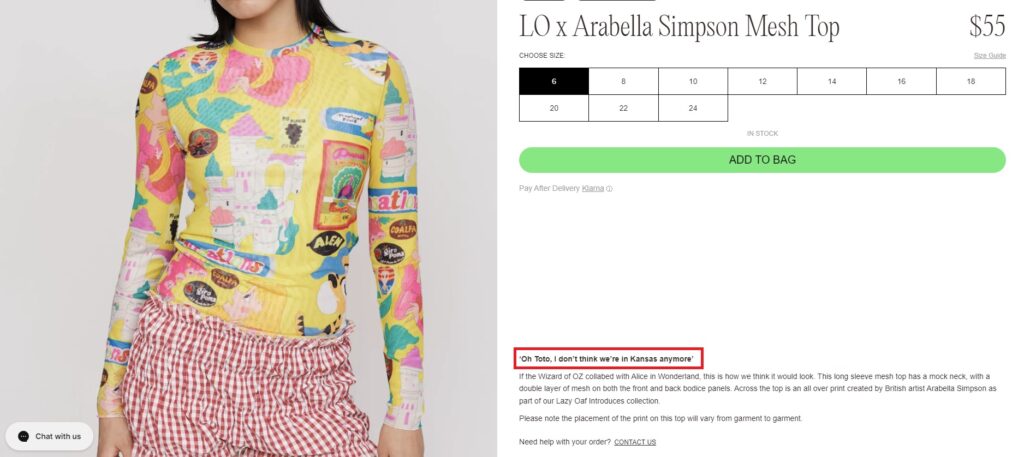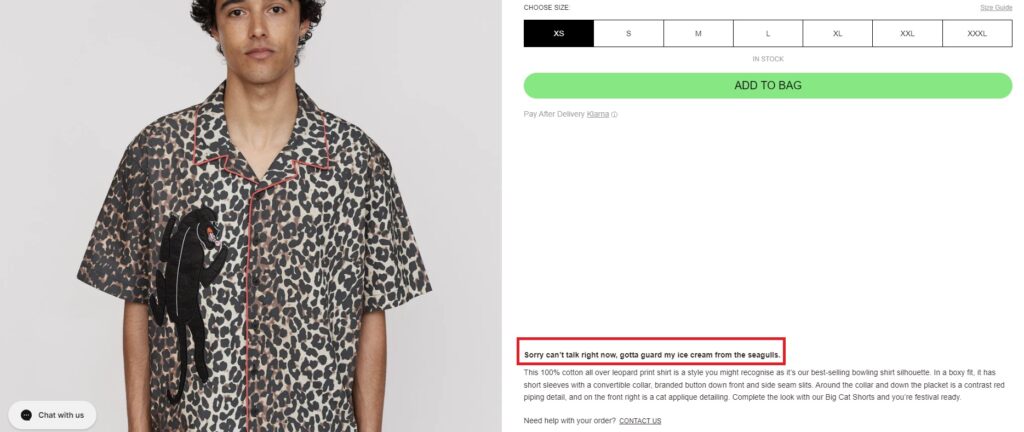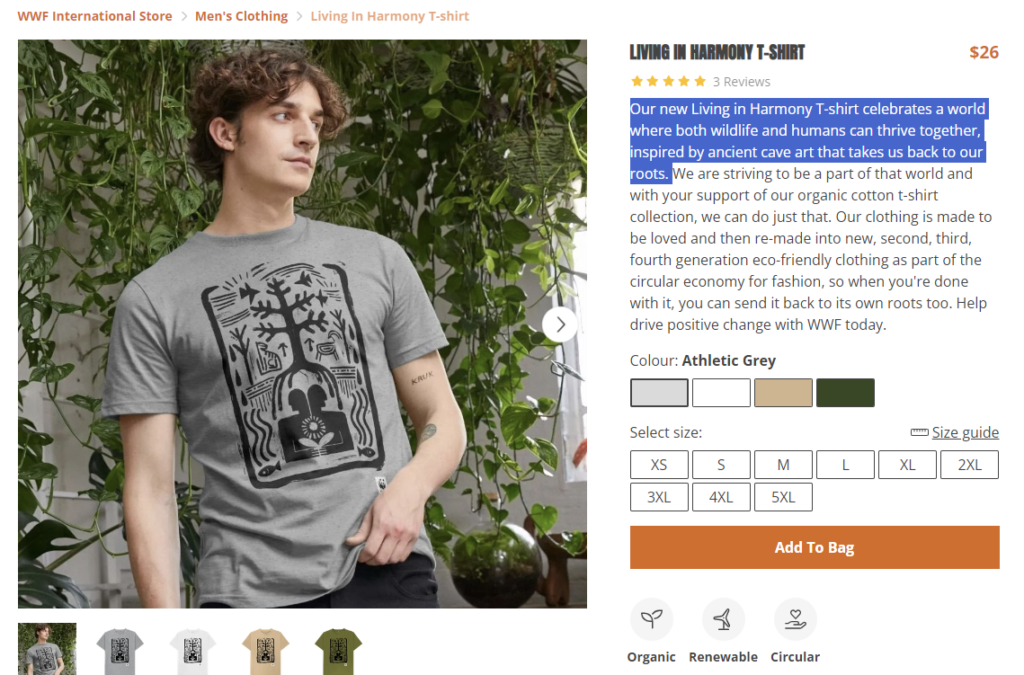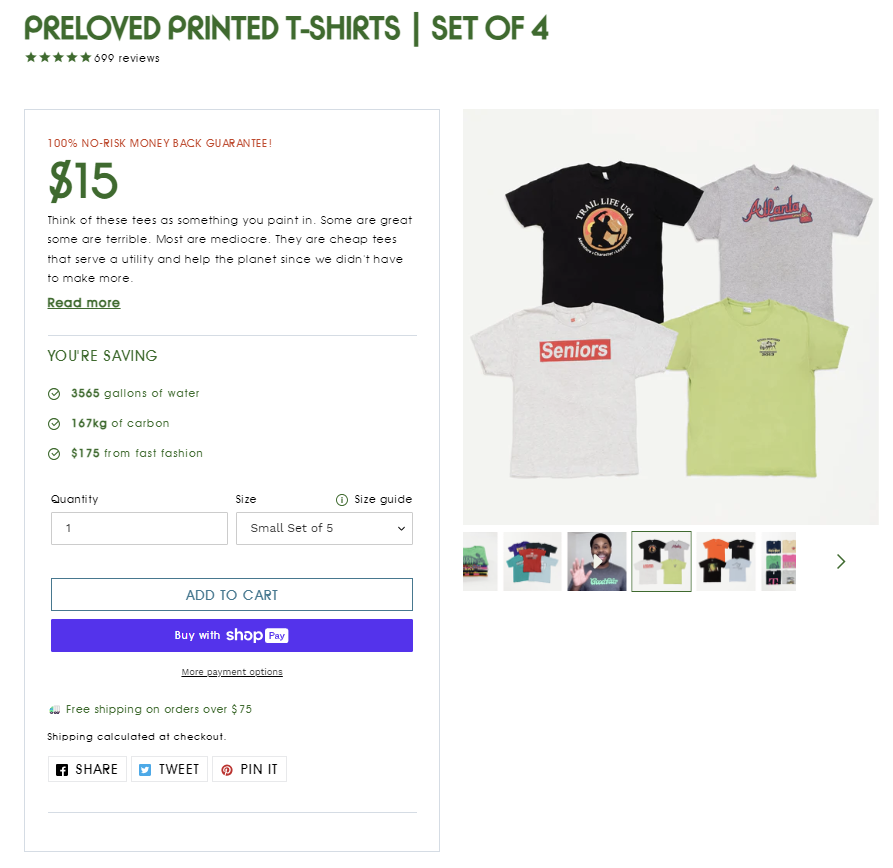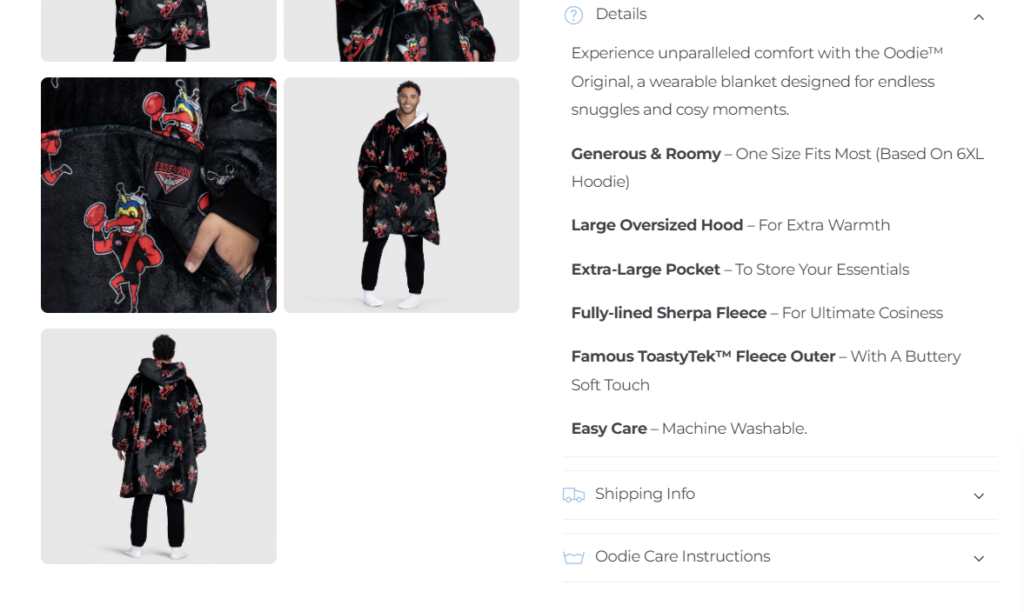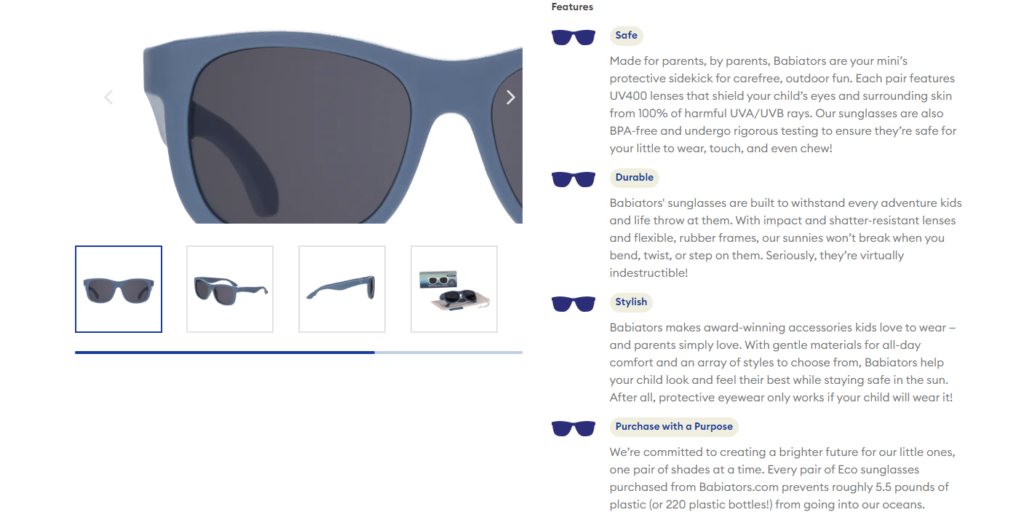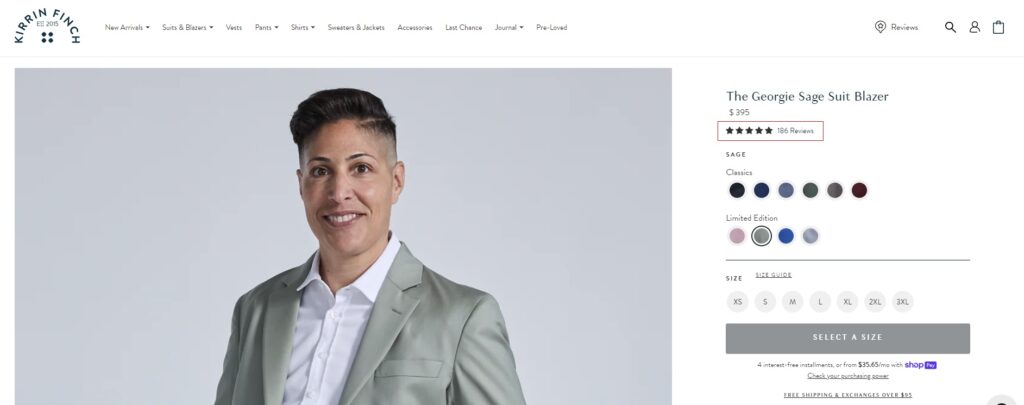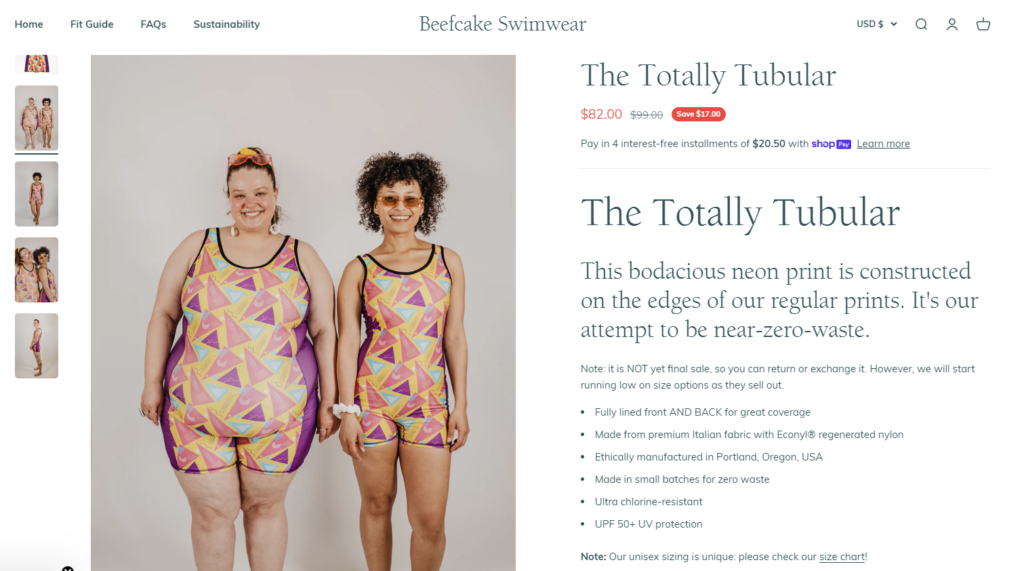Once upon a time, Cinderella was galavanting the pages of an online store and found themselves on the magic product page of a beautiful pair of So Kate pumps.
Was this the slipper they had been waiting for? The one that would make their gala gown pop?
They would never know!
Why?
Because this online store’s product description didn’t tell a captivating story, or highlight why these So Kates were the perfect dancing companion for their night out at the castle.
No, this product description sucked.
So Cinderella ran off into the sunset with another online retailer who knew how to write product descriptions that actually sell.
The real tragedy of the story is that writing a compelling product story, a description that attracts both humans and bots, isn’t as complicated as that store thought it was.
All they needed to do was follow this easy eight-step blueprint.
Step #1: Set the Scene with a Captivating Introduction
Begin your product description by setting the scene.
Imagine your product as the protagonist of a story. Define it in a way that instantly grabs attention and makes your audience want to learn more. Use vivid language to paint a picture of the product’s purpose and appeal.
The key to captivating your audience is using language that speaks directly to your target shopper.
Even the descriptions for the humble t-shirt can be jazzed up.
Take a look at what POD brand Lazy Oaf is doing for their shirt product descriptions. They use a short sentence to set the scene for their shoppers.
[Source: Lazy Oaf]
Step #2: Put a Spotlight on the Emotional Benefits
The next step is to reel them in with an emotional trigger.
This is where you address a shopper’s pain points or connect with the customer’s aspirations and desires.
How does this product and its features translate into real-world benefits for your shopper? How does it improve their lives, solve problems, or make them feel great?
The best way to do this is to use emotional triggers to connect with the customer’s aspirations and desires.
Let’s look at an example of a t-shirt description from the WWF product store. The first line in their product description both sets the scene and highlights the emotional benefits of their product.
Here is another example from Goodfair, where they prominently display a shopper’s environmental impact savings as part of their descriptions.
[Source: Goodfair]
As you can see, there are many ways you can tap into the emotions of your potential shoppers; you need to test text and displays to find the perfect combination for your specific audience.
Step #3: Make Your Features the Hero
Once you’ve reeled them in, you need to keep them engaged with the meat of your story: product features.
What sets your product apart? What is its USP (unique selling proposition)?
This means listing and describing a distinguishing feature, in detail. You want to emphasize how it elevates the product’s functionality and benefits the shopper.
Be specific.
Let’s look at some t-shirt hero feature examples and how you can creatively hero them in your description.
- Premium cotton fabric → Enjoy the softness and breathability of high-quality cotton that keeps you comfortable all day long.
- Tailored fit → Designed to flatter all body types with a fit that accentuates your shape without being too tight.
- Durable stitching → The reinforced seams ensure longevity, making this t-shirt a reliable choice for everyday wear.
DIY Copywriting Tip: Don’t know how to get creative with your copy? Try to incorporate sensory words and tactile verbs into your sentences. For instance, if your product’s USP is elegance and luxury, then you could write: “Indulge in the shimmering texture of our satin dress, adding a touch of glamour to any occasion.” Or, you can just use a good-quality product description generator that does it for you.
But remember, less is still more for the creative parts of your product description. If your product has many features or overly technical specifications, use bullet points to make your content more scannable.
Or you can ignore everything I have said and bullet all your text — if that suits your brand and audience.
Here’s a winning product page example from The Oodie. All their features are in a list that goes against all the copy formatting rules. (Well, mine at least!)
[Source: The Oodie]
Step #4: Use the Finer Details, Enrich the Tale
Another thing we can take from the example above is the addition of those additional details to the product details, including shipping information and care instructions.
[Source: The Oodie]
Even if your product is simple, including a section with technical specifications, dimensions, and other essential details is worth it. This helps answer any lingering questions and reassures buyers of their choices.
And the detailed story doesn’t have to be convoluted! To go back to the humble t-shirt, the final details could look like this:
- Material: 100% Cotton
- Sizes: Available in S, M, L, XL, XXL
- Care Instructions: Machine wash cold, tumble dry low
There are so many great ways you can do this creatively.
Here’s a great product description example from the winning Shopify store, Kettle & Fire. They incorporate some nutritional and USP facts into their product pages’ awesome “How to Enjoy” section.
[Source: Kettle & Fire]
Captivating? Check!
USPs included? Check! (healthy & quick to make)
Emotional triggers? Check!
Scannable finer details? Check!
All the components of a winning product story.
Here’s another example from accessory retailer Babiators. They went another route with their features, instead dividing them into too-easy-to-consume chapters.
[Source: Babiators]
Step #5: Thrill with Social Proof and Testimonials
If your product description is a fairy tale, then eCommerce social proof would be the supportive companion — the Grogu to your Din Djarin, if you will.
Social proof tells prospective customers, “Hey, you can trust what they are saying about their products; even this internet guy agrees!” Therefore, by including testimonials and reviews from happy customers, you build trust and credibility.
Adding product reviews is an excellent way to use social proof. According to Neil Patel, as many as 83% of people are more likely to trust a review than an ad.
Your review display can be subtle yet make a significant impact.
Look at Kirrin Finch’s product description. The rating and review numbers help the description without cluttering the page. (See, the perfect companion!)
[Source: Kirrin Finch]
But remember to keep them authentic; ensure you aren’t showcasing only the positive reviews and five-star ratings.
You want to show all the reviews — the good, bad, and ugly — to present a transparent view of customer experiences, which will, in turn, build trust and credibility. Additionally, addressing negative feedback publicly demonstrates the brand’s commitment to customer satisfaction and continuous improvement.
Yes, You Should Respond to Those Negative Reviews!
According to Bazaarvoice, 54% of shoppers expect a response from a brand when they leave a negative review. But it’s more than just meeting their expectations.
Responding to negative reviews demonstrates (to all your audiences) your commitment to customer satisfaction and helps build trust by showing that you value and address customer feedback.
Additionally, it can improve your brand’s reputation by providing an opportunity to resolve issues and turn dissatisfied customers into loyal ones.
Step #6: Complete the Scene with a Clear Call to Action
Every good story needs a climactic conclusion, and in product description terms, this is your CTA.
But we’re not looking for a Shyamalan plot twist here.
Instead, it should be clear. It should be bold. It should tell customers exactly what they should do next or how they can buy the product. And it doesn’t always have to point to the obvious: Buy now, or Add to cart.
Take a look at this example from Beefcake Swimwear. They include a CTA that sends potential customers to their sizing chart, as their product is unique.
[Source: Beefcake Swimwear]
To carry on with our t-shirt example, here are three ways you could end your t-shirt product description:
- Elevate your wardrobe with this must-have tee.
- Make a statement with your new favorite t-shirt.
- Start your collection with this classic tee.
Step #7: Weave SEO Magic into Your Product Story
Once your description is complete, it’s time to review and tweak your script to ensure it also appeals to bots. To ensure your product descriptions are discoverable, integrate SEO best practices.
On a basic level, this means using relevant keywords naturally within your description, focusing on high-traffic search terms related to your product. But in today’s saturated market, you must go beyond the basics.
Here are some advanced SEO techniques you should test to optimize your human product descriptions for bots:
- Use long-tail keywords naturally within your description to target specific search queries.
- Implement latent semantic indexing (LSI) keywords to provide context and improve relevance.
- Use keyword variations and synonyms to avoid keyword stuffing and to maintain readability.
- Incorporate internal links to related products or relevant blog posts to boost site navigation and SEO.
- Optimize meta titles and descriptions with primary keywords to improve SERP visibility.
- Use structured data mark-up to enable rich snippets and enhance SERP appearance.
- Update product descriptions regularly to keep content fresh and relevant for search engines.
- Monitor and analyze keyword performance to refine and improve your SEO strategy continuously.
Check out this complete guide for more in-depth strategies: Boost Traffic with SEO for Product Descriptions and Pages [Step-by-Step Guide]
Step #8: Bring Your Product Stories to Life with the Product Description Wizard
Okay, now it’s M. Night Shyamalan twist time!
What if I told you that there was a tool that could help you complete all the steps almost on auto-pilot?
A fairy godmother of product descriptions.
A noble knight. It’s a magic charm.
A tool that would ensure every Cinderella gets their pair of So Kate pumps.
Introducing StoreYa’s FREE Product Description Wizard. This powerful tool simplifies the process of creating engaging and persuasive descriptions tailored to your specific products.
Designed by eCommerce experts for eCommerce sellers, it generates high-quality product descriptions, quickly and accurately, freeing up valuable time for other essential tasks. Each description highlights key features, benefits, and unique selling points and is optimized for SEO.
Here’s how:
Wrap Up
The bottom line is that following these steps will ensure that your product descriptions captivate your audience, as a great story should. And whether you are DIY-ing it or using advanced AI, the outcome will be the same:
- More sales and better retention
The secret is weaving in a compelling narrative, highlighting emotional benefits, and integrating advanced SEO techniques to create an engaging shopping experience.
Got questions, post them in the comments below.

Nicole is a content writer with over sixteen years experience and flair for storytelling. She runs on a healthy dose of caffeine and enthusiasm. When she's not researching the next content trend or creating business content strategies, she's an avid beachgoer, coffee shop junkie and hangs out on LinkedIn.
Recommended articles
 Facebook Ads for eCommerce: 16 Strategies, Examples & Tips
Facebook Ads for eCommerce: 16 Strategies, Examples & Tips
 How to Build a Winning eCommerce Ads Strategy
How to Build a Winning eCommerce Ads Strategy
 Google Ads for eCommerce: Everything You Need to Know
Google Ads for eCommerce: Everything You Need to Know
 10X Your Traffic with PPC Management Software
10X Your Traffic with PPC Management Software
Comments
Powered by Facebook Comments

